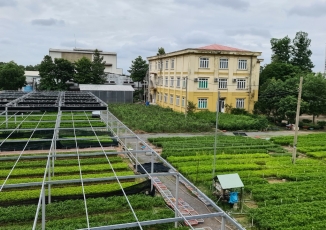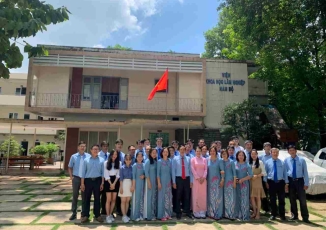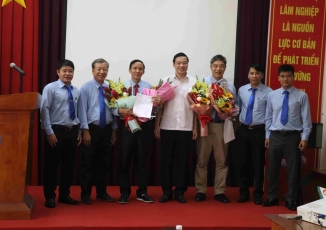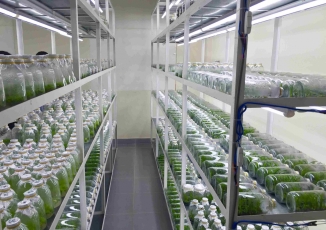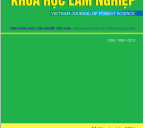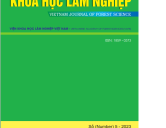Growth and physiological responses to intensity and timing of thinning in short rotation tropical Acacia hybrid plantations in South Vietnam
Growth and physiological responses to intensity and timing of thinning in short rotation tropical Acacia hybrid plantations in South Vietnam
Vu DinhHuongabcDaniel S.MendhambDugald C.Closec
Abstract
Acacia hybrid plantations are widely planted for pulpwood in Vietnam, but have the potential to be managed for high value saw-logs. This study examined the growth and physiological responses to thinning as a management option to increase the sawlog yield and value. Treatments were: unthinned (planting density 1111 trees ha−1), thinned to 833 or 600 trees ha−1 in a single thinning at either age 2 (early) or 3 (late) years, and progressively thinned from 1111 to 833 trees ha−1 at age 2 years, and then to 600 trees ha−1 at age 3 years. Three years after early thinning to 600 stems ha−1, mean stem diameter was increased by 16.7% and the stand volume was reduced by 15.8%; thinning to 833 stems ha−1 resulted in no significant loss in stand volume and increased mean diameter by 7.5%. The leaf area index, LAI of stands thinned to 600 stems ha−1 recovered rapidly and there was no significant difference between unthinned and thinned treatments 1 year after thinning; this recovery was also associated with a reduction in litterfall. Thinning to 600 stems ha−1 increased A1500 of the lower crown by 23.5 and 17.4% at age 2 and 3 yr, respectively; and this was associated with increased foliar phosphorus concentration. Thinning reduced leaf water stress during the dry season; leaf water potential and tree growth were significantly influenced by season. It was concluded that thinning to 600 trees ha−1 at age 2 years or to 833 trees ha−1 at age 3 years will produce wood with the highest diameter.
https://www.sciencedirect.com/science/article/abs/pii/S0378112716304595?via%3Dihub
- PHẢN ỨNG CỦA MỘT SỐ LOÀI CÂY NGẬP MẶN VỚI YẾU TỐ MÔI TRƯỜNG KHU VỰC VEN BIỂN CẦN GIỜ, TP HỒ CHÍ MINH - 10/04/2024
- Quyết định 426/QĐ-KHLN-KH Ban hành Quy trình kỹ thuật trồng rừng thâm canh Keo lá tràm cung cấp gỗ lớn tại vùng Đông Nam Bộ và Nam Trung Bộ - 15/12/2022
- Quyết định 297/QĐ-TCLN-PTR Về việc công nhận giống cây trồng lâm nghiệp - 15/12/2022
- Improving productivity and sustainability of successive rotations of Acacia auriculiformis plantations in South Vietnam - 14/09/2021
- Returns to Vietnamese smallholder farmers from managing acacia plantations for sawn wood over 4-10 year rotations - 14/09/2021
VIDEO CLIPS
Liên kết
Ấn phẩm mới
Thống kê truy cập
Đang online: 6
Truy cập ngày: 19177
Tổng truy cập: 281858






